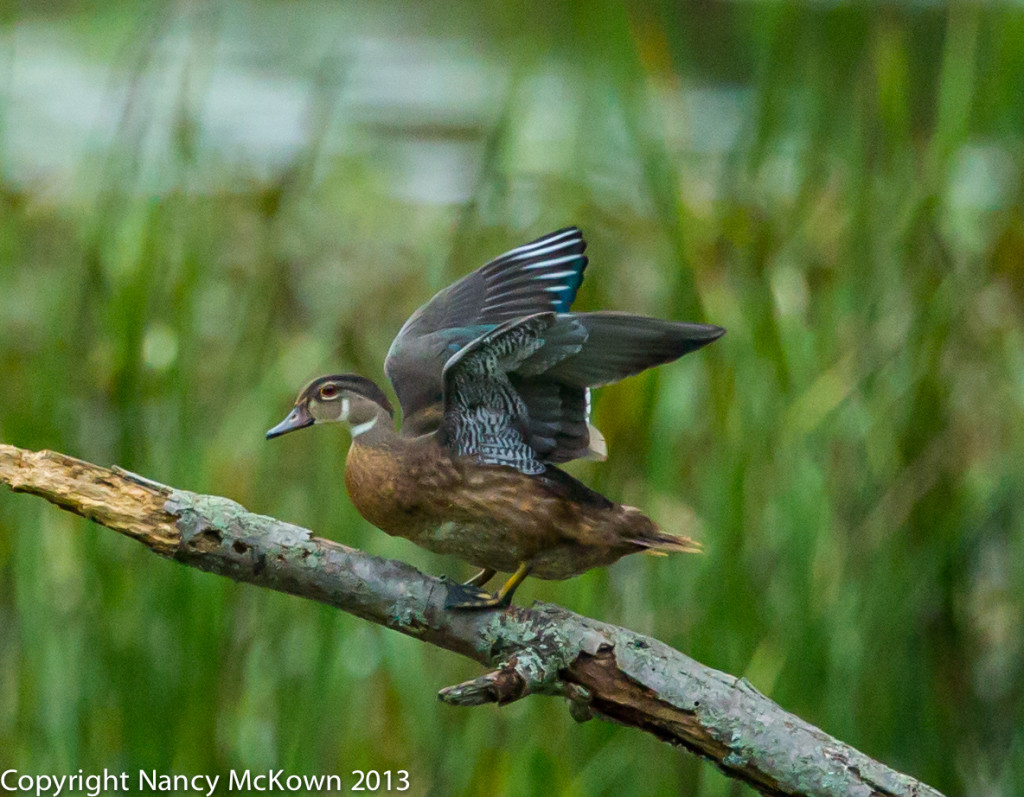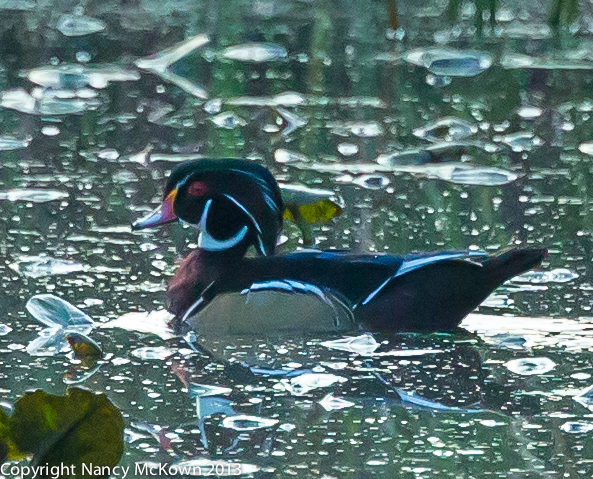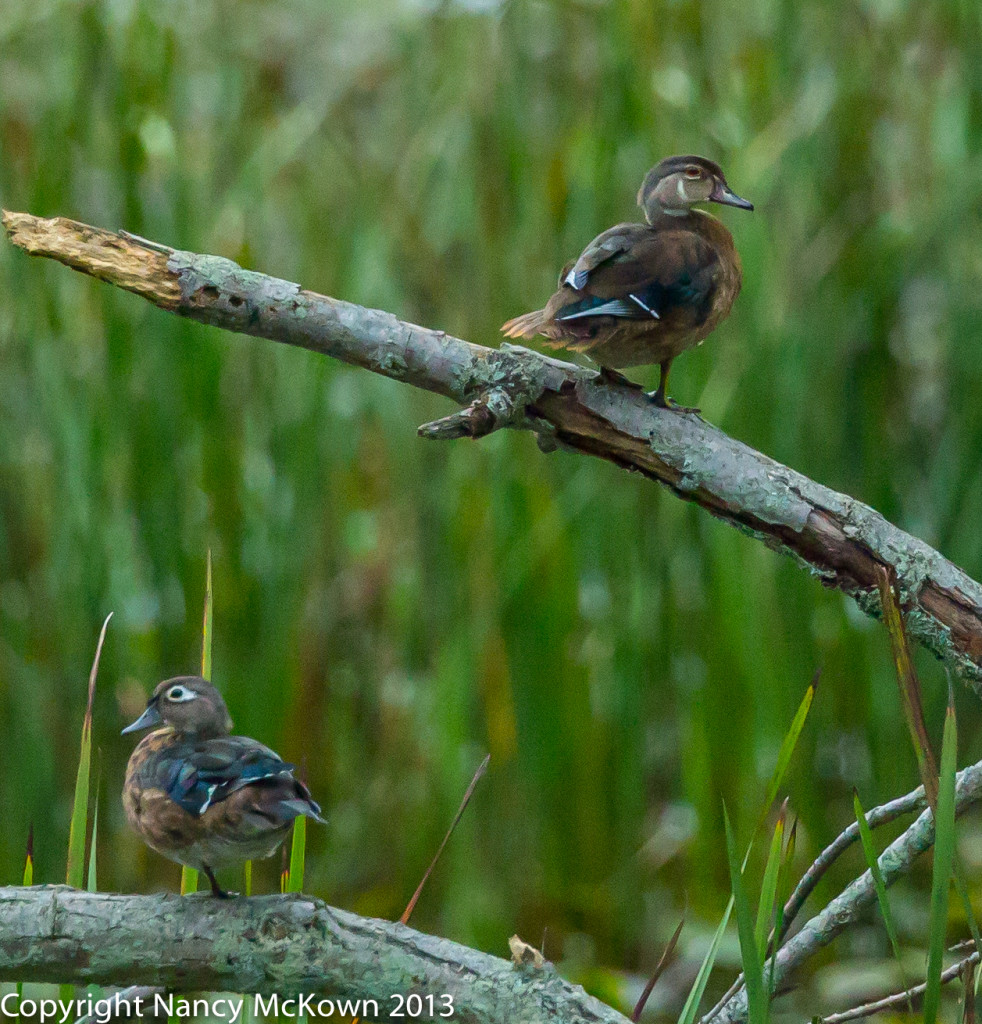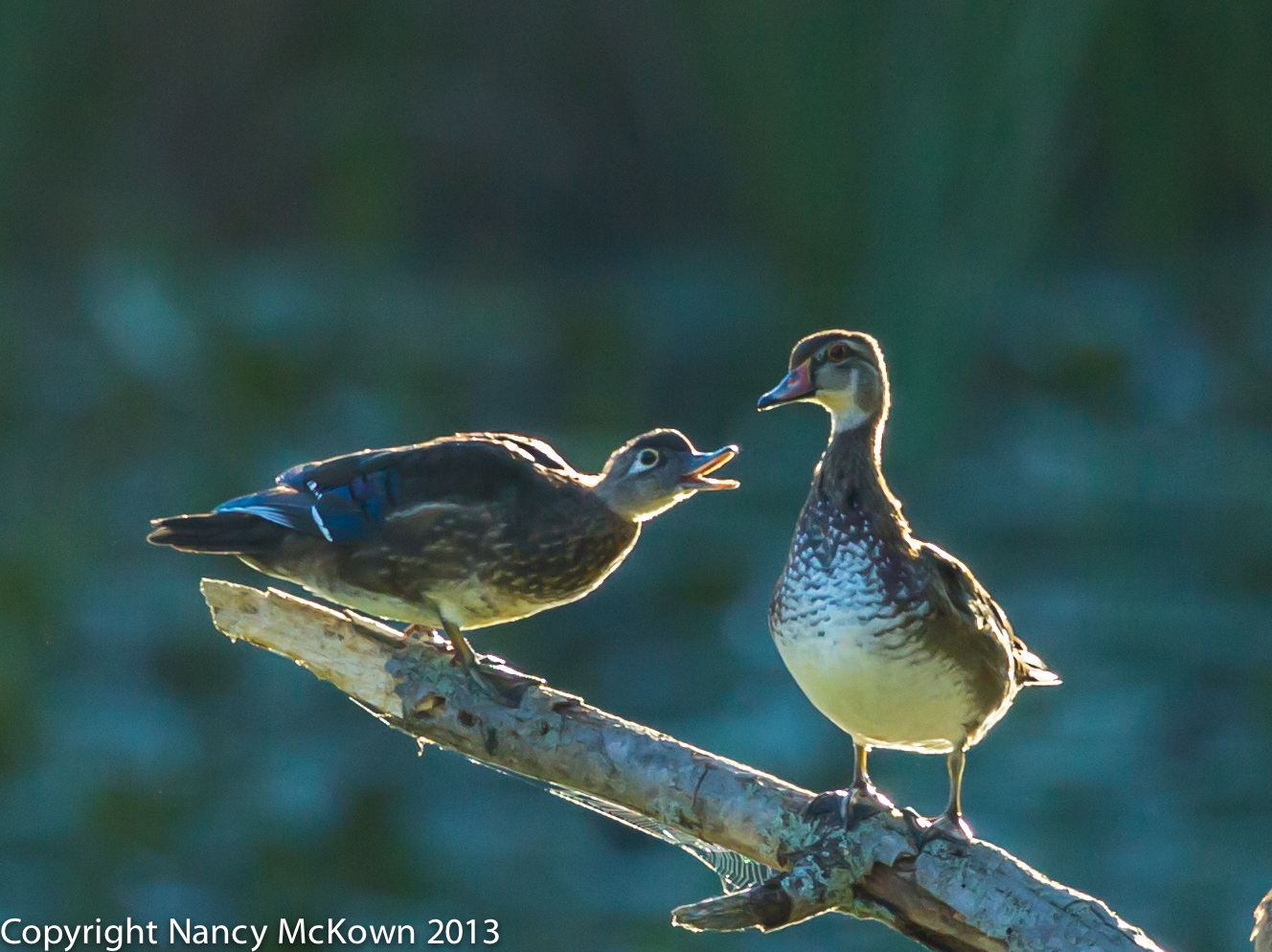ISO Matters in Bird Photography
The ISO on a digital camera refers to a light sensitivity setting. Low ISO means that there is plenty of ambient light for exposure.
DSLR cameras can be set to automatically adjust the sensitivity of the camera’s sensor (Auto ISO). If more light is needed for proper exposure (based on the shutter and aperture settings and how much light is getting through), then the camera will crank up the sensitivity of its sensor. The advantage of a high ISO setting is that photos can be taken in low light. However, the higher the camera sets the light sensitivity (ISO), the more appearance of noise (or grainy texture) the image has.
Clarity Sacrificed When Using High ISO
The appearance of grain is not an asset in wild bird photos.
I like the clarity of bird photos shot at a low ISO. Therefore, I try to shoot in rather strong, natural light to keep that ISO sensitivity low, below ISO 500 if possible. This is just a guideline. Alot of the time, given the ambient light, getting the ISO that low is simply not possible. So I have to decide whether to pass up the shot or take it at a high ISO setting.
Factors That Will Minimize Noise
The higher that ISO creeps up, the more grain that will surface on the image, and the more photo clarity is compromised. Most high end DSLR cameras allow you to pre-set a maximum ISO -let’s say 1000- above which the camera ISO setting does not cross. Of course, in low light situations, the shutter or aperture has to be adjusted to compensate.
There are a couple ways to minimize noise. Neither will give you tack sharp images, but they help.
- (Expensive Option) Buy a camera with a full size DSLR sensor that is engineered to produce less digital “noise” in low light situations.
- Use post processing software that helps reduce the impact of noise to a more acceptable level. (Examples are Lightroom, Noise Ninja).
Focus a Priority Over ISO
If you decide that the shot is worthwhile, despite the low light, then sharp focus has to be a primary concern. If you set the shutter too low to lower the ISO, your images will be out of focus. Long lenses exacerbate the focusing challenge.
Remember that in post processing, out-of-focus images are much harder to deal with than images with excessive noise.
Light Balancing Act
It comes down to a balancing act. If you don’t have enough light when photographing birds, you will have to anticipate some level of noise and accept the lack of detail and clarity after you take the images through post processing.

ISO 4000; 1/1250 second; f/5.6
Photographing Wood Ducks
I found a fun little park near my home. The creek was dammed up to create a marsh with lots of shady hidey holes for waterbirds. Beyond the marsh and all through the park are tall, thick trees, creating an abundance of shade. Not alot of sunlight gets through these trees. If I arrive at dawn, the sun is behind the trees. If I arrive a few hours before sunset, the sun is behind the trees. Even the overhead sun does not penetrate the trees over the marsh.
These wood ducks stayed at the far end of the marsh, under cover as much as possible. The parking lot is quite a distance from the water, so I got out of the car and set up my tripod as close to the shore as the ducks would let me approach. Ultimately though, the ducks were too far away for my 300 mm with 2x extender. NOTE: Distance also takes its toll on image quality.
Juggling Aperture and Shutter to Bring Down the ISO
To get these wood duck photos, I kept adjusting my aperture and shutter, hoping I could lower the ISO. The light was such that, to maintain good focus, even with the tripod, I had to shoot with an ISO of between 4000-6000.
Very noticeable noise. I brought the images into post processing to try to tone down the look of the grain. It did look better. The noise is less conspicuous, but clarity, texture and definition are sacrificed.

ISO 5000; 1/2000 Second; f/6.3

ISO 4000; 1/1250 second; f/5.6.
Keep Trying To Minimize Noise
I like the photos, but I would never enlarge them or frame them. I like the colors, the blurred background, and they appear to me as artful and well framed. The photos are clearly focused, but the amount of noise makes details hazy.
Taken as a whole, they look fine. But I will keep trying to capture images of wood ducks in more favorable (stronger) light.
